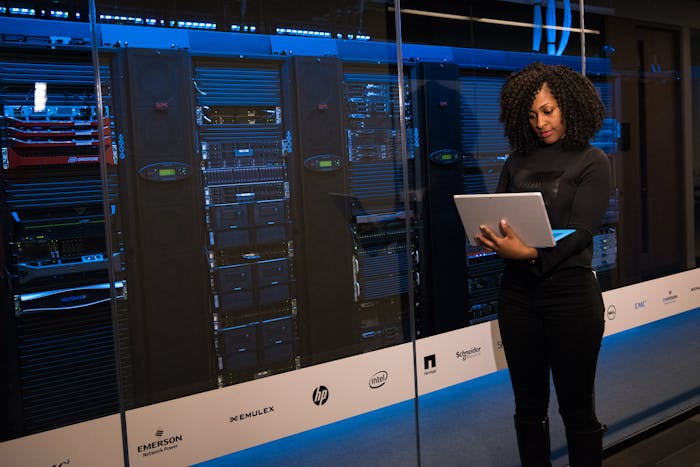Given the advancing technological landscape, cybersecurity must be a priority for most businesses. It goes beyond IT. Operations are also vulnerable to attacks.
Experts recognize the risk and focus on building OT cybersecurity systems. They operate in real time, keeping physical processes and equipment safe. The technology can prevent disruptions that can have dire consequences within operations.
Why is OT Cybersecurity Necessary?
Operating systems were not a huge cybersecurity threat in the past because they were not connected to the internet. However, as technology advanced, OT and IT networks converged. While the convergence led to better insights across departments, it also made OT systems more vulnerable.
As a result, it is not uncommon for cybercriminals to inject malicious code into software so it carries a valid signature, tricking the end user into obtaining the compromised product through a download. Another common issue involves threat actors hijacking access to a client’s systems. Other threats include:
- Social engineering
- System intrusions and credential theft
- Web application attacks
What is OT Cybersecurity?
OT cybersecurity reduces operational risks. Hardware and software monitor physical processes, devices, and infrastructure to protect people and information. Organizations are encouraged to adapt systems that work best for their operations, but they may consider adapting various frameworks and practices as follows:
Recommended Frameworks
- NIST SP 800-82 Guide to Industrial Control Systems (ICS) Security, which offers recommendations on how to secure ICS
- NIST IR 8183 Cybersecurity Framework (CSF) Manufacturing Profile provides guidelines for reducing risk in the manufacturing industry.
- American Water Works Association (AWWA) Water Sector Cybersecurity Risk Management Guidance provides guidelines on protecting the water sector from cyberattacks.
- Nuclear Energy Institute (NEI) 08-09 guides cybersecurity plans for nuclear power plant operators.
- CISA Recommended Cybersecurity Practices for Industrial Control Systems identifies areas OT system owners should focus on when integrating in-depth defense strategies.
- North American Electric Reliability Corporation (NERC) Critical Infrastructure Protection outlines requirements for Bulk Electric Systems operators.
- ISA/IEC 62443 standards provide a framework for addressing and mitigating vulnerabilities in industrial automation and control systems (IACSs).
- The CISA Chemical Facility Anti-Terrorism Standards (CFATS) program provides security measures in high-risk facilities, ensuring terrorists don’t weaponize dangerous chemicals.
OT Cybersecurity Best Practices
OT cybersecurity generally integrates the following strategies:
- Implementing cybersecurity in policies, plans, and procedures
- Access Control: Limiting access to OT systems on the principle of least privilege.
- Monitoring and incident response: Establishing a process for identifying and containing risks and recovering from threats.
- Personnel security, including user roles and third-party access
- Configuration management: Tracking, managing, and controlling changes to IT assets to ensure consistent performance.
- System development and acquisition: Developing and acquiring comprehensive systems to reduce risks and better align with business goals.
- Disaster recovery and business continuity: Creating plans to recover from risks quickly and pivot to new systems in the face of disruptions.
- Patch Management: Utilizing security patches to update software to the latest security standards.
- Network Segmentation: Isolating various systems to minimize risk.
- Risk Assessment: Identifying, assessing, and prioritizing OT risks to focus on critical areas.
- Employee Training: Educating employees on the latest practices and protocols through training workshops.
What are the Benefits of OT Security?
Every company that integrates cybersecurity can benefit from safer systems. However, there are additional advantages when applying it across IT-OT convergence as follows:
- Enhanced Visibility: OT security provides visibility to oversee all devices within the IT-OT network and monitor them continually to ensure security.
- Advanced Control: The technology includes multifactor authentication, ensuring only the appropriate parties have access. Network and micro-segmentation divide systems into zones of control, offering a layered and leveled approach. Sandboxing detects threats and automatically quarantines them before they can do further damage.
- Continuous Monitoring: The system provides insight into possible risks and offers reports and analytics to ensure ongoing protection.
Reduces Penalties
Updated business regulations are demanding cybersecurity measures. For example, NERC CIP standards include:
- Requirement R4 mandates that responsible entities (REs) have a documented access management program.
- Requirement R2 mandates a documented process for remote access management.
- R5 outlines a process for system access control.
- R1 calls for a documented supply chain cybersecurity risk management plan.
Want to learn more about keeping your operations secure? Sign up for our newsletter today.



0 Comments